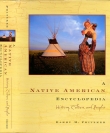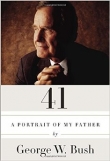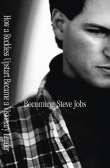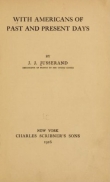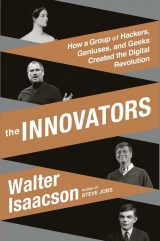
Текст книги "The Innovators: How a Group of Inventors, Hackers, Geniuses, and Geeks Created the Digital Revolution"
Автор книги: Walter Isaacson
Жанр:
Биографии и мемуары
сообщить о нарушении
Текущая страница: 39 (всего у книги 42 страниц)
65. Remarks of Bill Gates, Harvard Gazette, June 7, 2007.
66. Author’s interview with Bill Gates.
67. The section on Gates in Albuquerque draws on Allen, Idea Man, 1214 and passim; Manes and Andrews, Gates, 2011 and passim; Wallace and Erickson, Hard Drive, 85 and passim.
68. Bill Gates oral history, Henry Ford Innovation Series.
69. Allen, Idea Man, 1513.
70. Author’s interview with Bill Gates.
71. Allen, Idea Man, 1465; Manes and Andrews, Gates, 2975; Wallace and Erickson, Hard Drive, 130.
72. Author’s interview with Bill Gates.
73. Allen, Idea Man, 1376.
74. Fred Moore, “It’s a Hobby,” Homebrew Computer Club newsletter, June 7, 1975.
75. John Markoff, What the Dormouse Said (Viking, 2005; locations refer to the Kindle edition), 4633; Steven Levy, Hackers (Anchor/Doubleday, 1984; locations refer to the twenty-fifth anniversary reissue, O’Reilly, 2010), 231.
76. Author’s interview with Lee Felsenstein; Lee Felsenstein oral history, by Kip Crosby, Computer History Museum, May 7, 2008.
77. Homebrew Computer Club newsletter, Feb. 3, 1976, http://www.digibarn.com/collections/newsletters/homebrew/V2_01/gatesletter.html.
78. Author’s interview with Bill Gates.
79. Harold Singer, “Open Letter to Ed Roberts,” Micro-8 Computer User Group newsletter, Mar. 28, 1976.
80. Author’s interview with Lee Felsenstein.
81. Bill Gates interview, Playboy, July 1994.
82. This section draws from my Steve Jobs (Simon & Schuster, 2011), which was based on interviews with Steve Jobs, Steve Wozniak, Nolan Bushnell, Al Alcorn, and others. The Jobs biography includes a bibliography and source notes. For this book, I reinterviewed Bushnell, Alcorn, and Wozniak. This section also draws on Steve Wozniak, iWoz (Norton, 1984); Steve Wozniak, “Homebrew and How the Apple Came to Be,” http://www.atariarchives.org/deli/homebrew_and_how_the_apple.php.
83. When I posted an early draft of parts of this book for crowdsourced comments and corrections on Medium, Dan Bricklin offered useful suggestions. We got into an exchange about the creation of VisiCalc, and I subsequently added this section to the book. It is partly based on email exchanges with Bricklin and Bob Frankston and on chapter 12, “VisiCalc,” in Dan Bricklin, Bricklin on Technology (Wiley, 2009).
84. Email from Dan Bricklin to the author; Dan Bricklin, “The Idea,” http://www.bricklin.com/history/saiidea.htm.
85. Peter Ruell, “A Vision of Computing’s Future,” Harvard Gazette, Mar. 22, 2012.
86. Bob Frankston, “Implementing VisiCalc,” unpublished, Apr. 6, 2002.
87. Frankston, “Implementing VisiCalc.”
88. Author’s interview with Steve Jobs.
89. IBM corporate history, “The Birth of the IBM PC,” http://www-03.ibm.com/ibm/history/exhibits/pc25/pc25_birth.html.
90. Manes and Andrews, Gates, 3629.
91. Manes and Andrews, Gates, 3642; Steve Ballmer interview, “Triumph of the Nerds,” part II, PBS, June 1996. See also James Chposky and Ted Leonsis, Blue Magic (Facts on File, 1988), chapter 9.
92. Bill Gates and Paul Allen interview, by Brent Schlender, Fortune, Oct. 2, 1995.
93. Steve Ballmer interview, “Triumph of the Nerds,” part II, PBS, June 1996.
94. Jack Sams interview, “Triumph of the Nerds,” part II, PBS, June 1996. See also Steve Hamm and Jay Greene, “The Man Who Could Have Been Bill Gates,” Business Week, Oct. 24, 2004.
95. Tim Paterson and Paul Allen interviews, “Triumph of the Nerds,” part II, PBS, June 1996.
96. Steve Ballmer and Paul Allen interviews, “Triumph of the Nerds,” part II, PBS, June 1996; Manes and Andrews, Gates, 3798.
97. Bill Gates and Paul Allen interview, by Brent Schlender, Fortune, Oct. 2, 1995; Manes and Andrews, Gates, 3868.
98. Manes and Andrews, Gates, 3886, 3892.
99. Author’s interview with Bill Gates.
100. Bill Gates and Paul Allen interview, by Brent Schlender, Fortune, Oct. 2, 1995.
101. Author’s interview with Bill Gates.
102. Author’s interview with Bill Gates.
103. Bill Gates and Paul Allen interview, by Brent Schlender, Fortune, Oct. 2, 1995.
104. Bill Gates interview by David Rubenstein, Harvard, Sept. 21, 2013, author’s notes.
105. Bill Gates and Paul Allen interview, by Brent Schlender, Fortune, Oct. 2, 1995.
106. Bill Gates interview, conducted by David Bunnell, PC magazine, Feb. 1, 1982.
107. Isaacson, Steve Jobs, 135.
108. Isaacson, Steve Jobs, 94.
109. Author’s interview with Steve Jobs.
110. Steve Jobs presentation, Jan. 1984, https://www.youtube.com/watch?v=2B-XwPjn9YY.
111. Isaacson, Steve Jobs, 173.
112. Author’s interview with Andy Hertzfeld.
113. Author’s interviews with Steve Jobs and Bill Gates.
114. Andy Hertzfeld, Revolution in the Valley (O’Reilly Media, 2005), 191. See also Andy Hertzfeld, http://www.folklore.org/StoryView.py?story=A_Rich_Neighbor_Named_Xerox.txt.
115. Author’s interviews with Steve Jobs and Bill Gates.
116. Author’s interview with Steve Jobs.
117. In addition to the sources cited below, this section is based on my interview with Richard Stallman; Richard Stallman, essays and philosophy, on http://www.gnu.org/gnu/gnu.html; Sam Williams, with revisions by Richard M. Stallman, Free as in Freedom (2.0): Richard Stallman and the Free Software Revolution (Free Software Foundation, 2010). An earlier edition of the Williams book was published by O’Reilly Media in 2002. As that edition was being completed, Stallman and Williams “parted on less than cordial terms” based on Stallman’s objections and requests for corrections. Version 2.0 incorporated Stallman’s objections and a significant rewriting of some segments of the book. These are described by Stallman in his foreword and Williams in his preface to version 2.0, which Stallman later called “my semi-autobiography.” For comparison, the original text of the book can be found at http://oreilly.com/openbook/freedom/.
118. Author’s interview with Richard Stallman. See also K. C. Jones, “A Rare Glimpse into Richard Stallman’s World,” InformationWeek, Jan. 6, 2006; Richard Stallman interview, in Michael Gross, “Richard Stallman: High School Misfit, Symbol of Free Software, MacArthur-Certified Genius,” 1999, www.mgross.com/interviews/stallman1.html; Williams, Free as in Freedom, 26 and passim.
119. Richard Stallman, “The GNU Operating System and the Free Software Movement,” in Chris DiBona and Sam Ockman, editors, Open Sources: Voices from the Open Source Revolution (O’Reilly, 1999).
120. Author’s interview with Richard Stallman.
121. Richard Stallman, “The GNU Project,” http://www.gnu.org/gnu/thegnuproject.html.
122. Williams, Free as in Freedom, 75.
123. Richard Stallman, “The GNU Manifesto,” http://www.gnu.org/gnu/manifesto.html.
124. Richard Stallman, “What Is Free Software?” and “Why Open Source Misses the Point of Free Software,” https://www.gnu.org/philosophy/.
125. Richard Stallman, “The GNU System,” https://www.gnu.org/philosophy/.
126. Interview with Richard Stallman, conducted by David Betz and Jon Edwards, BYTE, July 1986.
127. “Linus Torvalds,” Linux Information Project, http://www.linfo.org/linus.html.
128. Linus Torvalds with David Diamond, Just for Fun (HarperCollins, 2001), 4.
129. Torvalds and Diamond, Just for Fun, 74, 4, 17; Michael Learmonth, “Giving It All Away,” San Jose Metro, May 8, 1997.
130. Torvalds and Diamond, Just for Fun, 52, 55, 64, 78, 72.
131. Linus Torvalds pronouncing “Linux”: http://upload.wikimedia.org/wikipedia/commons/0/03/Linus-linux.ogg.
132. Learmonth, “Giving It All Away.”
133. Torvalds and Diamond, Just for Fun, 58.
134. Linus Torvalds, “Free Minix-like Kernel Sources for 386-AT,” posting to Newsgroups: comp.os.minix, Oct. 5, 1991, http://www.cs.cmu.edu/~awb/linux.history.html.
135. Torvalds and Diamond, Just for Fun, 87, 93, 97, 119.
136. Gary Rivlin, “Leader of the Free World,” Wired, November 2003.
137. Yochai Benkler, The Penguin and the Leviathan: How Cooperation Triumphs over Self-Interest (Crown, 2011); Yochai Benkler, “Coase’s Penguin, or, Linux and the Nature of the Firm,” Yale Law Journal (2002), http://soc.ics.uci.edu/Resources/bibs.php?793.
138. Eric Raymond, The Cathedral and the Bazaar (O’Reilly Media, 1999), 30.
139. Alexis de Tocqueville, Democracy in America (originally published 1835–40; Packard edition), Kindle location 3041.
140. Torvalds and Diamond, Just for Fun, 122, 167, 120, 121.
141. Richard Stallman interview, Reddit, July 29, 2010, http://www.redditblog.com/2010/07/rms-ama.html.
142. Richard Stallman, “What’s in a Name?” https://www.gnu.org/gnu/why-gnu-linux.html.
143. Torvalds and Diamond, Just for Fun, 164.
144. Linus Torvalds blog post, “Black and White,” Nov. 2, 2008, http://torvalds-family.blogspot.com/2008/11/black-and-white.html.
145. Torvalds and Diamond, Just for Fun, 163.
146. Raymond, The Cathedral and the Bazaar, 1.
CHAPTER TEN: ONLINE
1. Lawrence Landweber email to the author, Feb. 5, 2014.
2. Ray Tomlinson, “The First Network Email,” http://openmap.bbn.com/~tomlinso/ray/firstemailframe.html.
3. Larry Brilliant email to the author, Feb. 14, 2014.
4. Larry Brilliant interview, Wired, Dec. 20, 2007.
5. Larry Brilliant interview, Wired, Dec. 20, 2007.
6. Katie Hafner, The Well (Carroll & Graf, 2001), 10.
7. Hafner, The Well, 30; Turner, From Counterculture to Cyberculture, 145.
8. Howard Rheingold, The Virtual Community (Perseus, 1993), 9.
9. Tom Mandel, “Confessions of a Cyberholic,” Time, Mar. 1, 1995. At that point, Mandel knew he was dying, and he asked his editors at Time—Phil Elmer-DeWitt, Dick Duncan, and myself—if he could write a farewell reflection about the online world.
10. Tom Mandel, posting on The WELL, http://www.well.com/~cynsa/tom/tom13.html. See also “To Our Readers” [signed by the publisher Elizabeth Long but written by Phil Elmer-DeWitt], Time, Apr. 17, 1995.
11. This section draws from interviews with Steve Case, Jim Kimsey, and Jean Case; Julius Duscha, “For Computers, a Marrying Sam,” New York Times, Dec. 25, 1977; Michael Banks, On the Way to the Web (APress, 2008, locations refer to the Kindle edition); Kara Swisher, AOL.com (Random House, 1998); Alec Klein, Stealing Time (Simon & Schuster, 2003). Steve Case, a longtime friend and colleague, provided comments and corrections on an early draft.
12. Klein, Stealing Time, 11.
13. Banks, On the Way to the Web, 792, 743.
14. Banks, On the Way to the Web, 602, 1467.
15. Author’s interview with Steve Case; Banks, On the Way to the Web, 1503; Swisher, AOL.com, 27.
16. Steve Case talk, JP Morgan Technology Conference, San Francisco, May 1, 2001.
17. Nina Munk, Fools Rush In (Collins, 2004), 73.
18. Author’s interview with Steve Case.
19. Swisher, AOL.com, 25.
20. Steve Case speech, Stanford, May 25, 2010.
21. Steve Case speech, Stanford, May 25, 2010.
22. Author’s interview with Steve Case.
23. Steve Case speech, Stanford, May 25, 2010.
24. Swisher, AOL.com, 27.
25. Author’s interview with Steve Case.
26. Author’s interview with Steve Case; Case email to author and comments on first draft published on Medium. Accounts differ on whether or not von Meister was eager to hire Steve Case or whether Dan Case pushed him to do it. Swisher, AOL.com, 28, says it was the former. Banks, On the Way to the Web, 1507, says it was the latter. There are probably elements of truth in both versions.
27. Author’s interview with Jim Kimsey.
28. Swisher, AOL.com, 53.
29. Swisher, AOL.com, 48.
30. Author’s interviews with Steve Case, Steve Wozniak.
31. Steve Case speech, Stanford, May 25, 2010.
32. Author’s interview with Steve Case.
33. Author’s interview with Steve Case.
34. Steve Case oral history, conducted by Walter Isaacson, 2013, the Riptide Project, Harvard, http://www.niemanlab.org/riptide/person/steve-case/. I participated in this oral history project on the digital disruption of journalism, which was curated by John Huey, Paul Sagan, and Martin Nisenholtz.
35. Steve Case oral history, “How the Web Was Won,” Vanity Fair, July 2008.
36. Author’s interview with Jim Kimsey.
37. Steve Case speech, Stanford, May 25, 2010.
38. Dave Fischer post, newsgroup: alt.folklore.computers, Jan. 25, 1994, https://groups.google.com/forum/#!original/alt.folklore.computers/wF4CpYbWuuA/jS6ZOyJd10sJ.
39. Wendy Grossman, Net.Wars (NYU, 1977), 33.
40. Author’s interview with Al Gore.
41. Al Gore interview with Wolf Blitzer, “Late Edition,” CNN, Mar. 9, 1999, http://www.cnn.com/ALLPOLITICS/stories/1999/03/09/president.2000/transcript.gore/.
42. Robert Kahn and Vinton Cerf, “Al Gore and the Internet,” an email to Declan McCullaugh and others, Sept. 28, 2000, http://www.politechbot.com/p-01394.html.
43. Newt Gingrich, speech to the American Political Science Association, Sept. 1, 2000.
CHAPTER ELEVEN: THE WEB
1. Tim Berners-Lee, Weaving the Web (HarperCollins, 1999), 4. See also Mark Fischetti, “The Mind Behind the Web,” Scientific American, Mar. 12, 2009.
2. Author’s interview with Tim Berners-Lee.
3. Author’s interview with Tim Berners-Lee.
4. Author’s interview with Tim Berners-Lee.
5. Author’s interview with Tim Berners-Lee.
6. Tim Berners-Lee interview, Academy of Achievement, June 22, 2007.
7. Author’s interview with Tim Berners-Lee.
8. Author’s interview with Tim Berners-Lee.
9. Enquire Within Upon Everything (1894), http://www.gutenberg.org/files/10766/10766-h/10766-h.htm.
10. Berners-Lee, Weaving the Web, 1.
11. Author’s interview with Tim Berners-Lee.
12. Tim Berners-Lee interview, Academy of Achievement, June 22, 2007.
13. Berners-Lee, Weaving the Web, 10.
14. Berners-Lee, Weaving the Web, 4.
15. Berners-Lee, Weaving the Web, 14.
16. Author’s interview with Tim Berners-Lee.
17. Tim Berners-Lee interview, Academy of Achievement, June 22, 2007.
18. Berners-Lee, Weaving the Web, 15.
19. John Naish, “The NS Profile: Tim Berners-Lee,” New Statesman, Aug. 15, 2011.
20. Berners-Lee, Weaving the Web, 16, 18.
21. Berners-Lee, Weaving the Web, 61.
22. Tim Berners-Lee, “Information Management: A Proposal,” CERN, Mar. 1989, http://www.w3.org/History/1989/proposal.html.
23. James Gillies and Robert Cailliau, How the Web Was Born (Oxford, 2000), 180.
24. Berners-Lee, Weaving the Web, 26.
25. Gillies and Cailliau, How the Web Was Born, 198.
26. Gillies and Cailliau, How the Web Was Born, 190.
27. Robert Cailliau interview, “How the Web Was Won,” Vanity Fair, July 2008.
28. Gillies and Cailliau, How the Web Was Born, 234.
29. Tim Smith and François Flückiger, “Licensing the Web,” CERN, http://home.web.cern.ch/topics/birth-web/licensing-web.
30. Tim Berners-Lee, “The World Wide Web and the ‘Web of Life,’ ” 1998, http://www.w3.org/People/Berners-Lee/UU.html.
31. Tim Berners-Lee, posting to the Newsgroup alt.hypertext, Aug. 6, 1991, http://www.w3.org/People/Berners-Lee/1991/08/art-6484.txt.
32. Nick Bilton, “As the Web Turns 25, Its Creator Talks about Its Future,” New York Times, Mar. 11, 2014.
33. Gillies and Cailliau, How the Web Was Born, 203. See also Matthew Lasar, “Before Netscape,” Ars Technica, Oct. 11, 2011.
34. Berners-Lee, Weaving the Web, 56.
35. Gillies and Cailliau, How the Web Was Born, 217.
36. Author’s interview with Marc Andreessen.
37. Author’s interview with Marc Andreessen.
38. Robert Reid, A rchitects of the Web (Wiley, 1997), 7.
39. Gillies and Cailliau, How the Web Was Born, 239; alt.hypertext Newsgroup, Friday, Jan. 29, 1993, 12:22:43 GMT, http://www.jmc.sjsu.edu/faculty/rcraig/mosaic.txt.
40. Author’s interview with Marc Andreessen.
41. Gillies and Cailliau, How the Web Was Born, 240.
42. Author’s interview with Marc Andreessen.
43. Berners-Lee, Weaving the Web, 70; author’s interview with Tim Berners-Lee.
44. Author’s interview with Marc Andreessen.
45. Author’s interview with Tim Berners-Lee.
46. Berners-Lee, Weaving the Web, 70.
47. Berners-Lee, Weaving the Web, 65.
48. Ted Nelson, “Computer Paradigm,” http://xanadu.com.au/ted/TN/WRITINGS/TCOMPARADIGM/tedCompOneLiners.html.
49. Jaron Lanier interview, by Eric Allen Bean, Nieman Journalism Lab, May 22, 2013.
50. John Huey, Martin Nisenholtz, and Paul Sagan, “Riptide,” Harvard Kennedy School, http://www.niemanlab.org/riptide/.
51. Author’s interview with Marc Andreessen.
52. Author’s interview with Tim Berners-Lee.
53. Author’s interview with Marc Andreessen.
54. John Markoff, “A Free and Simple Computer Link,” New York Times, Dec. 8, 1993.
55. This section is primarily based on my interviews with Justin Hall and his own postings at http://www.links.net/.
56. Justin Hall, “Justin’s Links,” http://www.links.net/vita/web/story.html.
57. Author’s interviews with Justin Hall, Joan Hall.
58. Author’s interview with Howard Rheingold; Howard Rheingold, The Virtual Community (Perseus, 1993).
59. Author’s interviews with Justin Hall, Howard Rheingold; Gary Wolf, Wired—A Romance (Random House, 2003), 110.
60. Scott Rosenberg, Say Everything (Crown, 2009), 24.
61. Rosenberg, Say Everything, 44.
62. Justin Hall, “Exposing Myself,” posted by Howard Rheingold, http://www.well.com/~hlr/jam/justin/justinexposing.html.
63. Author’s interview with Arianna Huffington.
64. Clive Thompson, Smarter Than You Think (Penguin, 2013), 68.
65. Hall, “Exposing Myself.”
66. Author’s interview with Ev Williams. This section also draws from the Ev Williams interview in Jessica Livingston, Founders at Work (Apress, 2007), 2701 and passim; Nick Bilton, Hatching Twitter (Portfolio, 2013), 9 and passim; Rosenberg, Say Everything, 104 and passim; Rebecca Mead, “You’ve Got Blog,” New Yorker, Nov. 13, 2000.
67. Dave Winer, “Scripting News in XML,” Dec. 15, 1997, http://scripting.com/davenet/1997/12/15/scriptingNewsInXML.html.
68. Livingston, Founders at Work, 2094.
69. Livingston, Founders at Work, 2109, 2123, 2218.
70. Meg Hourihan, “A Sad Kind of Day,” http://web.archive.org/web/20010917033719/http://www.megnut.com/archive.asp?which=2001_02_01_archive.inc; Rosenberg, Say Everything, 122.
71. Ev Williams, “And Then There Was One,” Jan. 31, 2001, http://web.archive.org/web/20011214143830/http://www.evhead.com/longer/2200706_essays.asp.
72. Livingston, Founders at Work, 2252.
73. Livingston, Founders at Work, 2252.
74. Williams, “And Then There Was One.”
75. Dan Bricklin, “How the Blogger Deal Happened,” blog posting, Apr. 15, 2001, http://danbricklin.com/log/blogger.htm; Dan Bricklin, Bricklin on Technology (Wiley, 2009), 206.
76. Livingston, Founders at Work, 2289, 2302.
77. Author’s interview with Ev Williams.
78. Author’s interview with Ev Williams.
79. Author’s interview with Ev Williams.
80. Andrew Lih, The Wikipedia Revolution (Hyperion, 2009), 1111. See also Ward Cunningham and Bo Leuf, The Wiki Way: Quick Collaboration on the Web (Addison-Wesley, 2001); Ward Cunningham, “HyperCard Stacks,” http://c2.com/~ward/HyperCard/; Ward Cunningham, keynote speech, Wikimania, Aug. 1, 2005.
81. Ward Cunningham, “Invitation to the Pattern List,” May 1, 1995, http://c2.com/cgi/wiki? InvitationToThePatternsList.
82. Ward Cunningham, correspondence on the etymology of wiki, http://c2.com/doc/etymology.html.
83. Tim Berners-Lee interview, Riptide Project, Schornstein Center, Harvard, 2013.
84. Kelly Kazek, “Wikipedia Founder, Huntsville Native Jimmy Wales, Finds Fame Really Cool,” News Courier (Athens, AL), Aug. 12, 2006.
85. Author’s interview with Jimmy Wales.
86. Author’s interview with Jimmy Wales; Lih, The Wikipedia Revolution, 585.
87. Marshall Poe, “The Hive,” Atlantic, Sept. 2006.
88. Jimmy Wales interview, conducted by Brian Lamb, C-SPAN, Sept. 25, 2005.
89. Author’s interview with Jimmy Wales; Eric Raymond, “The Cathedral and the Bazaar,” first presented in 1997, reprinted in The Cathedral and the Bazaar (O’Reilly Media, 1999).
90. Richard Stallman, “The Free Universal Encyclopedia and Learning Resource” (1999), http://www.gnu.org/encyclopedia/free-encyclopedia.html.
91. Larry Sanger, “The Early History of Nupedia and Wikipedia,” Slashdot, http://beta.slashdot.org/story/56499; and O’Reilly Commons, http://commons.oreilly.com/wiki/index.php/Open_Sources_2.0/Beyond_Open_Source:_Collaboration_and_Community/The_Early_History_of_Nupedia_and_Wikipedia:_A_Memoir.
92. Larry Sanger, “Become an Editor or Peer Reviewer!” Nupedia, http://archive.is/IWDNq.
93. Author’s interview with Jimmy Wales; Lih, The Wikipedia Revolution, 960.
94. Author’s interview with Jimmy Wales.
95. Larry Sanger, “Origins of Wikipedia,” Sanger user page, http://en.wikipedia.org/wiki/User:Larry_Sanger/Origins_of_Wikipedia;, Lih The Wikipedia Revolution, 1049.
96. Ben Kovitz, “The Conversation at the Taco Stand,” Kovitz user page, http://en.wikipedia.org/wiki/User:BenKovitz.
97. Jimmy Wales, “Re: Sanger’s Memoirs” thread, Apr. 2005, http://lists.wikimedia.org/pipermail/wikipedia-l/2005-April/021463.html.
98. Jimmy Wales and Larry Sanger, “Re: Sanger’s Memoirs” thread, Apr. 2005, http://lists.wikimedia.org/pipermail/wikipedia-l/2005-April/021460.html, http://lists.wikimedia.org/pipermail/wikipedia-l/2005-April/021469.html, and subsequent. See also Larry Sanger, “My Role in Wikipedia,” http://larrysanger.org/roleinwp.html; “User:Larry Sanger/Origins of Wikipedia,” http://en.wikipedia.org/wiki/User:Larry_Sanger/Origins_of_Wikipedia; “History of Wikipedia” and its talk page, http://en.wikipedia.org/wiki/History_of_Wikipedia, along with Jimmy Wales edit changes to the article, http://en.wikipedia.org/w/index.php?title=Jimmy_Wales&diff=next&oldid=29849184; Talk: Bomis, revisions made by Jimmy Wales, http://en.wikipedia.org/w/index.php?diff=11139857.
99. Kovitz, “The Conversation at the Taco Stand.”
100. Larry Sanger, “Let’s Make a Wiki,” Nupedia message thread, Jan. 10, 2001, http://archive.is/yovNt.
101. Lih, The Wikipedia Revolution, 1422.
102. Clay Shirky, “Wikipedia—An Unplanned Miracle,” Guardian, Jan. 14, 2011; see also Clay Shirky, Here Comes Everybody: The Power of Organizing without Organizations (Penguin, 2008) and Cognitive Surplus: Creativity and Generosity in a Connected Age (Penguin, 2010).
103. Author’s interview with Jimmy Wales.
104. Larry Sanger, “Why Wikipedia Must Jettison Its Anti-Elitism,” Dec. 31, 2004, www.LarrySanger.org.
105. Wikipedia press release, Jan. 15, 2002, http://en.wikipedia.org/wiki/Wikipedia:Press_releases/January_2002.
106. Author’s interview with Jimmy Wales.
107. Shirky, “Wikipedia—An Unplanned Miracle.”
108. Yochai Benkler, “Coase’s Penguin, or, Linux and the Nature of the Firm,” Yale Law Journal (2002), http://soc.ics.uci.edu/Resources/bibs.php?793; Yochai Benkler, The Penguin and the Leviathan: How Cooperation Triumphs over Self-Interest (Crown, 2011).
109. Daniel Pink, “The Buck Stops Here,” Wired, Mar. 2005; Tim Adams, “For Your Information,” Guardian, June 30, 2007; Lord Emsworth user page, http://en.wikipedia.org/wiki/User:Lord_Emsworth; Peter Steiner, New Yorker cartoon, July 5, 1993, at http://en.wikipedia.org/wiki/On_the_Internet,_nobody_knows_you’re_a_dog.
110. Jonathan Zittrain, The Future of the Internet and How to Stop It (Yale, 2008), 147.
111. Author’s interview with Jimmy Wales.
112. Author’s interview with Jimmy Wales.
113. John Battelle, The Search (Portfolio, 2005; locations refer to the Kindle edition), 894.
114. Battelle, The Search, 945; author’s visit with Srinija Srinivasan.
115. In addition to the sources cited below, this section is based on my interview and conversations with Larry Page; Larry Page commencement address at the University of Michigan, May 2, 2009; Larry Page and Sergey Brin interviews, Academy of Achievement, Oct. 28, 2000; “The Lost Google Tapes,” interviews by John Ince with Sergey Brin, Larry Page, and others, Jan. 2000, http://www.podtech.net/home/?s=Lost+Google+Tapes; John Ince, “Google Flashback—My 2000 Interviews,” Huffington Post, Feb. 6, 2012; Ken Auletta, Googled (Penguin, 2009); Battelle, The Search; Richard Brandt, The Google Guys (Penguin, 2011); Steven Levy, In the Plex (Simon & Schuster, 2011); Randall Stross, Planet Google (Free Press, 2008); David Vise, The Google Story (Delacorte, 2005); Douglas Edwards, I’m Feeling Lucky: The Confessions of Google Employee Number 59 (Mariner, 2012); Brenna McBride, “The Ultimate Search,” College Park magazine, Spring 2000; Mark Malseed, “The Story of Sergey Brin,” Moment magazine, Feb. 2007.
116. Author’s interview with Larry Page.
117. Larry Page interview, Academy of Achievement.
118. Larry Page interview, by Andy Serwer, Fortune, May 1, 2008.
119. Author’s interview with Larry Page.
120. Author’s interview with Larry Page.
121. Author’s interview with Larry Page.
122. Larry Page, Michigan commencement address.
123. Author’s interview with Larry Page.
124. Author’s interview with Larry Page.
125. Author’s interview with Larry Page.
126. Battelle, The Search, 1031.
127. Auletta, Googled, 28.
128. Interview with Larry Page and Sergey Brin, conducted by Barbara Walters, ABC News, Dec. 8, 2004.
129. Sergey Brin talk, Breakthrough Learning conference, Google headquarters, Nov. 12, 2009.
130. Malseed, “The Story of Sergey Brin.”
131. Sergey Brin interview, Academy of Achievement.
132. McBride, “The Ultimate Search.”
133. Auletta, Googled, 31.
134. Auletta, Googled, 32.
135. Vise, The Google Story, 33.
136. Auletta, Googled, 39.
137. Author’s interview with Larry Page.
138. Author’s interview with Larry Page.
139. Terry Winograd interview, conducted by Bill Moggridge, http://www.designinginteractions.com/interviews/TerryWinograd.
140. Author’s interview with Larry Page.
141. Craig Silverstein, Sergey Brin, Rajeev Motwani, and Jeff Ullman, “Scalable Techniques for Mining Causal Structures,” Data Mining and Knowledge Discovery, July 2000.
142. Author’s interview with Larry Page.
143. Author’s interview with Larry Page.
144. Larry Page, Michigan commencement address.
145. Vise, The Google Story, 10.
146. Larry Page, Michigan commencement address.
147. Battelle, The Search, 1183.
148. Battelle, The Search, 1114.
149. Larry Page, Michigan commencement address.
150. Author’s interview with Larry Page.
151. Levy, In the Plex, 415, citing Page’s remarks at the 2001 PC Forum, held in Scottsdale, Arizona.
152. Sergey Brin interview, conducted by John Ince, “The Lost Google Tapes,” part 2.
153. Sergey Brin, Rajeev Motwani, Larry Page, Terry Winograd, “What Can You Do with a Web in Your Pocket?” Bulletin of the IEEE Computer Society Technical Committee on Data Engineering, 1998.
154. Author’s interview with Larry Page.
155. Levy, In the Plex, 358.
156. Levy, In the Plex, 430.
157. Sergey Brin interview, conducted by John Ince, “The Lost Google Tapes,” part 2, http://www.podtech.net/home/1728/podventurezone-lost-google-tapes-part-2-sergey-brin.
158. Levy, In the Plex, 947.
159. Author’s interview with Larry Page.
160. Sergey Brin and Larry Page, “The Anatomy of a Large-Scale Hypertextual Web Search Engine,” seventh International World-Wide Web Conference, Apr. 1998, Brisbane, Australia.
161. Vise, The Google Story, 30.
162. Author’s interview with Larry Page.
163. David Cheriton, Mike Moritz, and Sergey Brin interviews, conducted by John Ince, “The Lost Google Tapes”; Vise, The Google Story, 47; Levy, In the Plex, 547.
164. Vise, The Google Story, 47; Battelle, The Search, 86.
165. Sergey Brin interview, conducted by John Ince, “The Lost Google Tapes.”
166. Larry Page interview, conducted by John Ince, “The Lost Google Tapes.”
167. Auletta, Googled, 44.
168. Sergey Brin interview, conducted by John Ince, “The Lost Google Tapes,” part 2.
CHAPTER TWELVE: ADA FOREVER
1. Dyson, Turing’s Cathedral, 6321; John von Neumann, The Computer and the Brain (Yale, 1958), 80.
2. Gary Marcus, “Hyping Artificial Intelligence, Yet Again,” New Yorker, Jan. 1, 2014, citing “New Navy Device Learns by Doing” (UPI wire story), New York Times, July 8, 1958; “Rival,” New Yorker, Dec. 6, 1958.
3. Marvin Minsky and Seymour Papert, the original gurus of artificial intelligence, challenged some of Rosenblatt’s premises, after which the excitement surrounding the Perceptron faded and the entire field entered a decline known as the “AI winter.” See Danny Wilson, “Tantalizingly Close to a Mechanized Mind: The Perceptrons Controversy and the Pursuit of Artificial Intelligence,” undergraduate thesis, Harvard, December 2012; Frank Rosenblatt, “The Perceptron: A Probabilistic Model for Information Storage and Organization in the Brain,” Psychological Review, Fall 1958; Marvin Minsky and Seymour Papert, Perceptrons (MIT, 1969).
4. Author’s interview with Ginni Rometty.
5. Garry Kasparov, “The Chess Master and the Computer,” New York Review of Books, Feb. 11, 2010; Clive Thompson, Smarter Than You Think (Penguin, 2013), 3.
6. “Watson on Jeopardy,” IBM’s Smarter Planet website, Feb. 14, 2011, http://asmarterplanet.com/blog/2011/02/watson-on-jeopardy-day-one-man-vs-machine-for-global-bragging-rights.html.
7. John Searle, “Watson Doesn’t Know It Won on Jeopardy,” Wall Street Journal, Feb. 23, 2011.
8. John E. Kelly III and Steve Hamm, Smart Machines (Columbia, 2013), 4. Steve Hamm is a technology journalist now working as a writer and communications strategist at IBM. I have attributed the opinions in the book to Kelly, who is the director of IBM research.
9. Larry Hardesty, “Artificial-Intelligence Research Revives Its Old Ambitions,” MIT News, Sept. 9, 2013.
10. James Somers, “The Man Who Would Teach Computers to Think,” Atlantic, Nov. 2013.
11. Gary Marcus, “Why Can’t My Computer Understand Me,” New Yorker, Aug. 16, 2013.
12. Steven Pinker, The Language Instinct (Harper, 1994), 191.
13. Stuart Russell and Peter Norvig, Artificial Intelligence: A Modern Approach (Prentice Hall, 1995), 566.
14. Author’s interview with Bill Gates.
15. Nicholas Wade, “In Tiny Worm, Unlocking Secrets of the Brain,” New York Times, June 20, 2011; “The Connectome of a Decision-Making Neural Network,” Science, July 27, 2012; The Dana Foundation, https://www.dana.org/News/Details.aspx?id=43512.
16. John Markoff, “Brainlike Computers, Learning from Experience,” New York Times, Dec. 28, 2013. Markoff, who has long done thoughtful reporting on this field, is writing a book that explores the implications of machines that can replace human labor.
17. “Neuromorphic Computing Platform,” the Human Brain Project, https://www.humanbrainproject.eu/neuromorphic-computing-platform1; Bennie Mols, “Brainy Computer Chip Ditches Digital for Analog,” Communications of the ACM, Feb. 27, 2014; Klint Finley, “Computer Chips That Work Like a Brain Are Coming—Just Not Yet,” Wired, Dec. 31, 2013. Beau Cronin of O’Reilly Media has proposed a drinking game: “take a shot every time you find a news article or blog post that describes a new AI system as working or thinking ‘like the brain’ ” (http://radar.oreilly.com/2014/05/it-works-like-the-brain-so.html), and he maintains a pinboard of stories making such claims (https://pinboard.in/u:beaucronin/t:like-the-brain/#).



